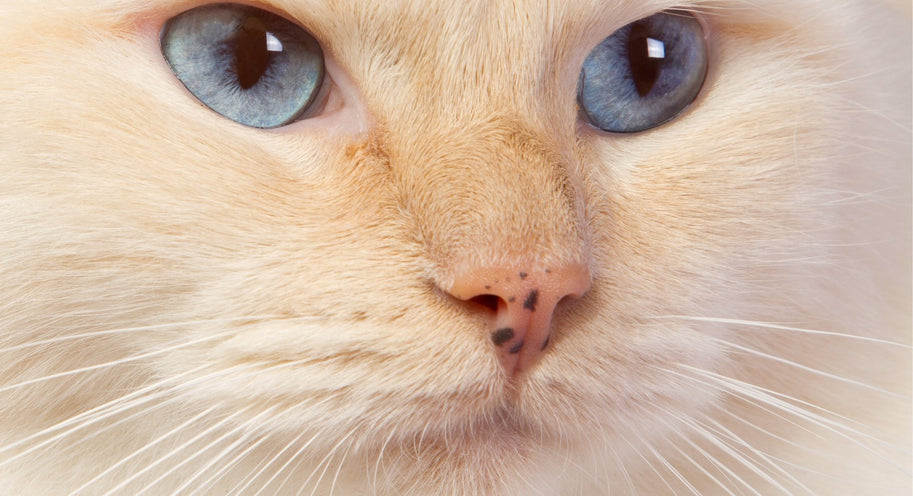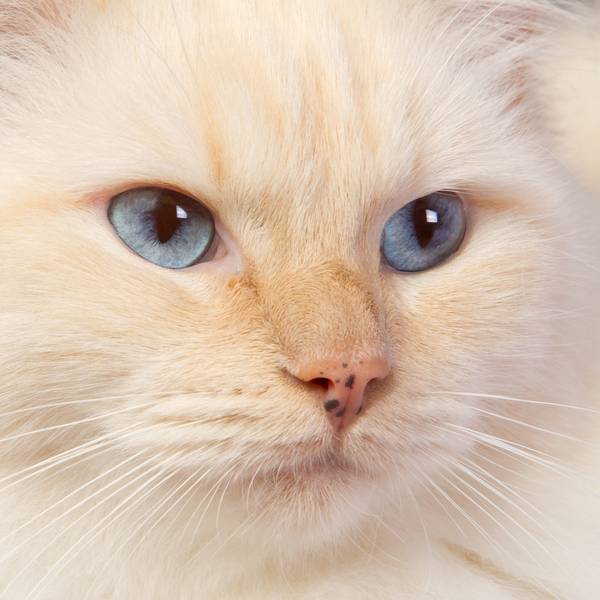Cats possess many physiological attributes that give them their astounding athletic abilities; one of the most prominent features all cats share that enables this are whiskers.
But why exactly do cats have whiskers?
The anatomy of the whisker
A common mistake people make is assuming that cat whiskers and human hair are alike. The whiskers, unlike human hair, are actually touch receptors. These longer, stiffer hairs — also called vibrissae — are embedded more deeply in the cat’s body than the shorter top-fur coat. The vibrissae are connected securely to the sensitive muscular and nervous systems, sending information about the surroundings directly to the cat’s sensory nerves, giving it a heightened sense of feeling and helping the cat to detect and respond to changes in its surroundings – sort of like kitty radar.
A cat’s tactile hairs may be the most prominent on either side of its nose and upper facial lip. You may be also able to see shorter whiskers above each of the eyes (kind of like eyebrows). But did you know that cats also have whiskers on their jaw line and on the back of their front legs?
Thou shall not cut ones whiskers!
Another common mistake is presuming that cat whiskers should be trimmed. Some cats, like the Devon Rex, even have curly facial whiskers, so you might think that it wouldn’t be harmful to straighten them out with a little trim. You’d be wrong!
Grooming, trimming or cutting off a cat’s whiskers is a big no-no. Without their tactile hairs, cats become very disoriented and frightened. In short, whiskers enable cats to gauge and make sense of their environment. Whiskers do grow back, but cats need their whiskers to remain intact in the same way you and I need our touch senses to get around. That is, cats use their whiskers in the same way that we use the touch receptors in our fingertips to feel our way around in the darkness, and to alert us to potentially painful situations.
Cat whiskers shed and grow back naturally, and should be left alone.
Feeling their way around - even in the dark
Cats have a sensory organ at the end of their whiskers called a proprioceptor, which sends tactile signals to the brain and nervous system. The proprioceptor is related to the position of the body and limbs, an important part of knowing where every part of the body is so that decisions can be made for the next immediate movement. This organ makes the cat’s whiskers very sensitive to even the smallest change in the cat’s environment. A cat’s whiskers not only help it to gauge whether it can fit into a tight space (without even being able to see it), they can even respond to vibrations in the air, such as when the cat is chasing prey.
Whiskers also serve as a way for cats to visually measure distance, which is why they are able to leap so quickly and gracefully onto a narrow ledge or out of harm’s way.
Getting in the mood
Whiskers serve another purpose besides acting as guidance, tracking, and radar systems – they also serve as a kind of barometer for the cat’s moods. When a cat is resting or content, its whiskers will be mostly immobile. But if you see the whiskers suddenly bunch up and lay flat against the cat’s face — that may be a sign that the cat is scared.
Perhaps when playing “chase the toy” with a cat, you’ll notice its whiskers are pointing forward. This is probably its “game face,” a sign that your cat is in hunting mode.
The whiskers also make it pretty easy to tell when a cat is startled or excited, because every hair on its body will be standing on end, including the whiskers, which will point almost completely forward.
Whiskers are a vital part of a cat’s mobility and sense of security. Without whiskers, cats would not be able to achieve the great acrobatic feats that are so awe-inspiring, or protect themselves from dangerous situations.
To learn even more about our feline friends, visit your local Just For Pets store.






